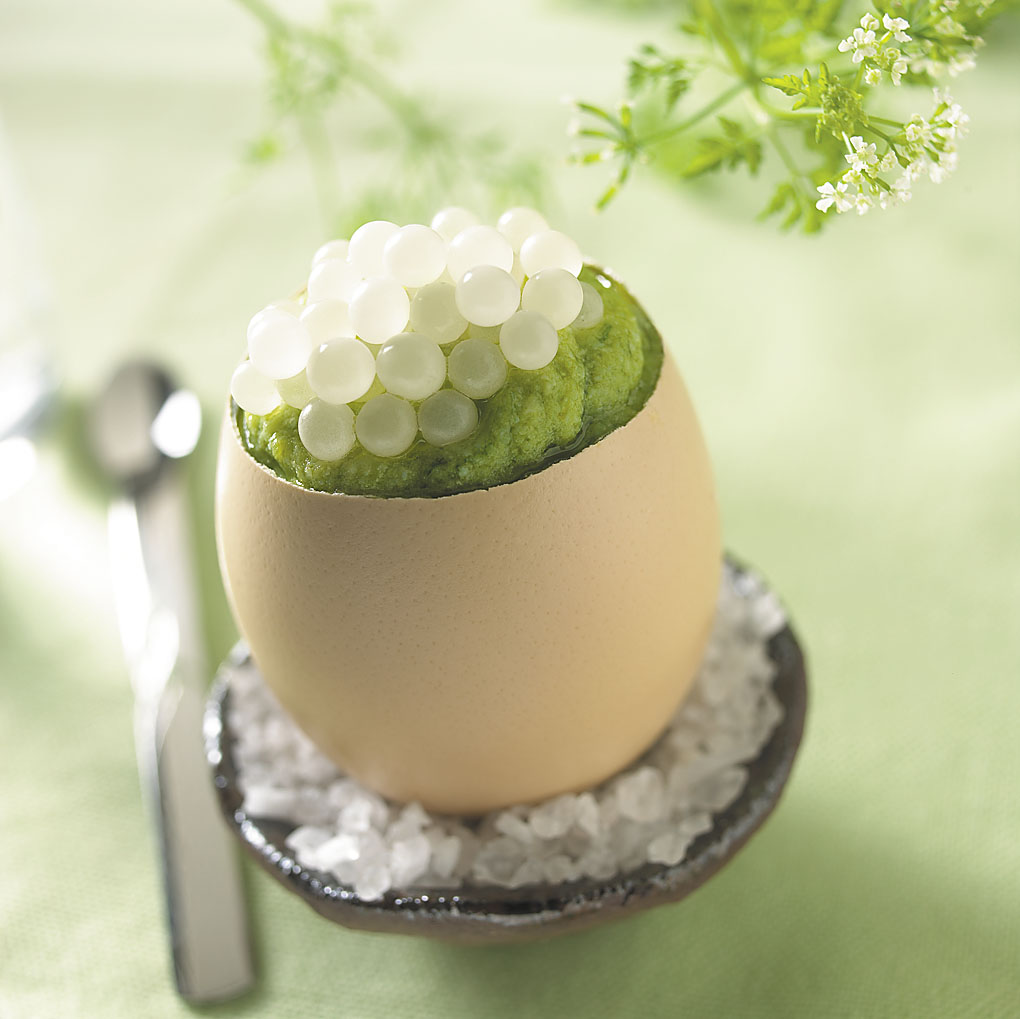Snail Eggs on:
[Wikipedia]
[Google]
[Amazon]

 Snail caviar, also known as
Snail caviar, also known as

 Snail caviar, also known as
Snail caviar, also known as escargot
Snails are considered edible in many areas such as the Mediterranean region, Africa, or Southeast Asia, while in other cultures, snails are seen as a taboo food. In American English, edible land snails are also called escargot, taken from the Fren ...
caviar or escargot pearls, is a type of caviar
Caviar (also known as caviare; from fa, خاویار, khâvyâr, egg-bearing) is a food consisting of salt-cured roe of the family Acipenseridae. Caviar is considered a delicacy and is eaten as a garnish or a spread. Traditionally, the t ...
that consists of fresh or processed eggs of land snails. It is a luxury gourmet speciality produced in France and Poland. They were also a delicacy in the ancient world, also known as "Pearls of Aphrodite" for their supposed aphrodisiac properties.
In their natural state, the egg
An egg is an organic vessel grown by an animal to carry a possibly fertilized egg cell (a zygote) and to incubate from it an embryo within the egg until the embryo has become an animal fetus that can survive on its own, at which point the a ...
s are colourless. After processing, the caviar may be cream-coloured, pinkish-white, or white, with the eggs generally 3–4 mm in diameter. Some snail eggs may measure at 3–6 mm in diameter. Some commercial snail farms that produce escargot include the production of snail caviar as a part of their operations.
Characteristics
The raw snail eggs have a slick shell that is delicate and breakable. They are sometimespasteurised
Pasteurization or pasteurisation is a process of food preservation in which packaged and non-packaged foods (such as milk and fruit juices) are treated with mild heat, usually to less than , to eliminate pathogens and extend shelf life.
Th ...
to preserve
The word preserve may refer to:
Common uses
* Fruit preserves, a type of sweet spread or condiment
* Nature reserve, an area of importance for wildlife, flora, fauna or other special interest, usually protected
Arts, entertainment, and media
...
them. However, the pasteurisation of snail eggs has been described as having a tarnishing effect upon their flavour. Some preserved versions are processed and jarred without the use of pasteurisation, using brine
Brine is a high-concentration Solution (chemistry), solution of salt (NaCl) in water (H2O). In diverse contexts, ''brine'' may refer to the salt solutions ranging from about 3.5% (a typical concentration of seawater, on the lower end of that of ...
as a preservative
A preservative is a substance or a chemical that is added to products such as food products, beverages, pharmaceutical drugs, paints, biological samples, cosmetics, wood, and many other products to prevent decomposition by microbial growth or ...
. Some producers use a flavoured brine to add flavour to the product.
The flavour of snail caviar has been described as being reminiscent of "baked asparagus", or "baked mushroom" with a "subtle" flavour with "woody notes", as having a "strong earthy" flavour, and as being crunchier than fish egg caviar. It may be served as other caviars are, with toast points
A toast point is a triangular slice of bread that has been toasted after the crusts have been cut off. Toast points are commonly served as a side dish or as part of an hors d'oeuvre or snack using ingredients such as caviar and rillettes.
Toast ...
, sour cream and champagne. It may also be served in soups.
Snail farms
Snail farming is referred to asheliciculture
Heliciculture, commonly known as snail farming, is the process of raising edible land snails, primarily for human consumption or cosmetic use. The meat and snail eggs a.k.a. ''white caviar'' can be consumed as escargot and as a type of caviar, ...
, and includes the process of farming or raising land snails specifically for human consumption. Some commercial snail farms collect and process snail caviar, which is then jarred and marketed to consumers. Sometimes the snails are raised and kept in temperature, lighting and climate controlled conditions to encourage maximal reproduction, which produces the eggs. Since snails are hermaphroditic (having both male and female sexual organs), all can produce eggs. Snails typically bury their eggs in soil after they are laid.
One method of harvesting the eggs involves placing the snails in boxes that have soil and sand in them, whereupon the eggs are gathered. Snail egg output is meagre when compared to fish roe production such as that from sturgeon. As a comparison, one snail typically lays approximately four grams of eggs annually, whereas one sturgeon may have up to of eggs.
Market
In August 1987 in the United States, the Brut d'Escargot brand of snail caviar was reported as having a retail market value of . At that time, the retail price was similar to that ofBeluga caviar
Beluga caviar is caviar consisting of the roe (or eggs) of the beluga sturgeon ''Huso huso''. The fish is found primarily in the Caspian Sea, which is bordered by Iran, Azerbaijan, Kazakhstan, Russia, and Turkmenistan. It can also be found in ...
. In December 2007, a 50-gram jar of De Jaeger brand snail caviar, produced at a snail farm in Soissons, France, retailed for €80. In September 2014, a 50-gram jar of Viennese Snails brand snail caviar, produced at a farm near Vienna, Austria, retailed for more than €150. A 50-gram jar equates to approximately two tablespoons of product. Some snail farms sell snail caviar directly to restaurants.
See also
* List of delicacies * Snails as foodReferences
{{Edible molluscs, state=collapsed Roe Snail dishes